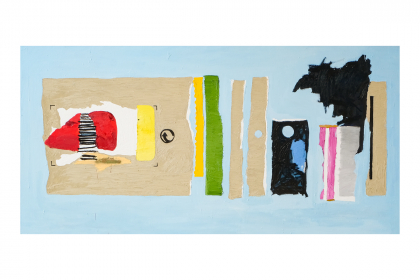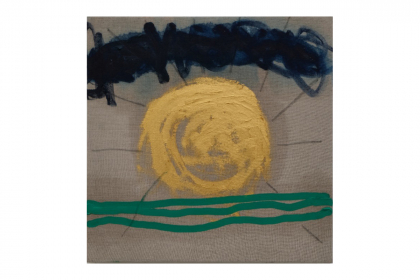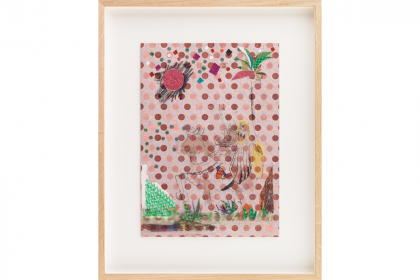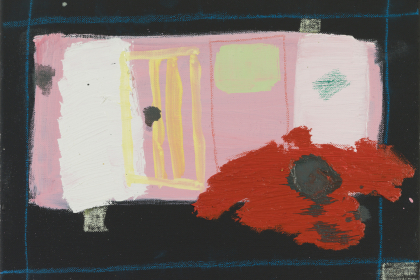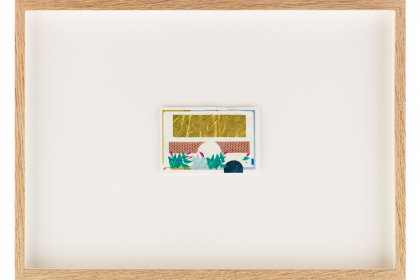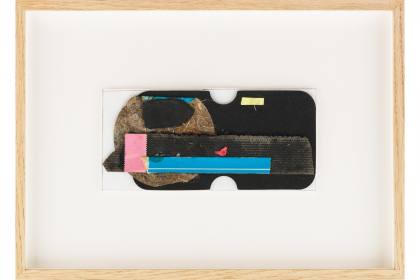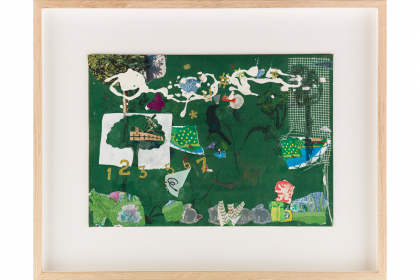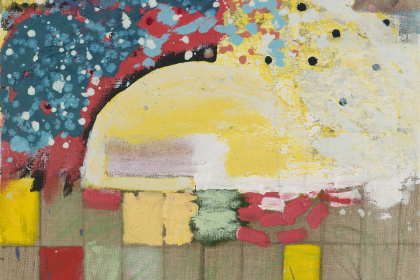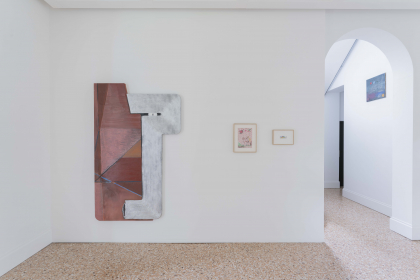Balancing his mind between chaos & minimal- ism, Maxim Renard (1994), holder of a BFA form the Media, Art & Design faculty from Hasselt and a Social Work Bachelor Degree (Pxl College University, Hasselt), is developing his practice op- erating a strong dialogue between painting and collage, in the way he works and searches about composition: those two practices are forming a single whole. He always starts with collage, quick drafts or try to think painting as such. It allows him to canalise information as a boiling hub and while bringing a structural approach to painting. “Collage”, not only in the strict meaning of assembly solid elements all together, is the essence of his work and the way is mixing made up and authentic memories. A bit like a puzzle constituated by those blurred fragments.
Evolving in versatile universes and atmospheres related to dreamlike gazing zones, medieval miniature works and architecture, he always wants to see his works as a relish, a fragment of time (from the present or from the past) as if it was part of a dreamlike world by drawing inspiration from books, images and more 2.0 inspirational fluxes from the nowadays Internet while borrowing attitude from the Robert Rauschenberg or the John Baldessari ways of building up images and thinking about composition as a stable structure, as such Kurt Schwitters when he managed to disorder clean and balanced. Even if certain parts of his work could remind the techniques of the American painter Chris Martin or the Spanish painter Miquel Barceló, those elements are only traces and gestures.
He intends to create a very unique way to create images.
Maxim Renard is constantly working on four series changing over the time: he is stepping into painting and collage using his feelings and his deepest thoughts about the surrounding world and concerns such as climate change or international migration conflicts. The series consist to the followings: the fallen heroes for the romantic times, which is what he borrowed the most to poetry, literature and cinema; the smashed and deconstructed portraits pushing the limits of figurative practice, the white “rooms” enlightening his attraction for architecture and finally he works on landscape but not as an image per se but more as a pretext to mix matters and give the canvas another dimension. At the end, even if “painting” is the essence of his work he gives it another role by tranforming it and translate it into a solid object.
Vince Vanden Bogaard


